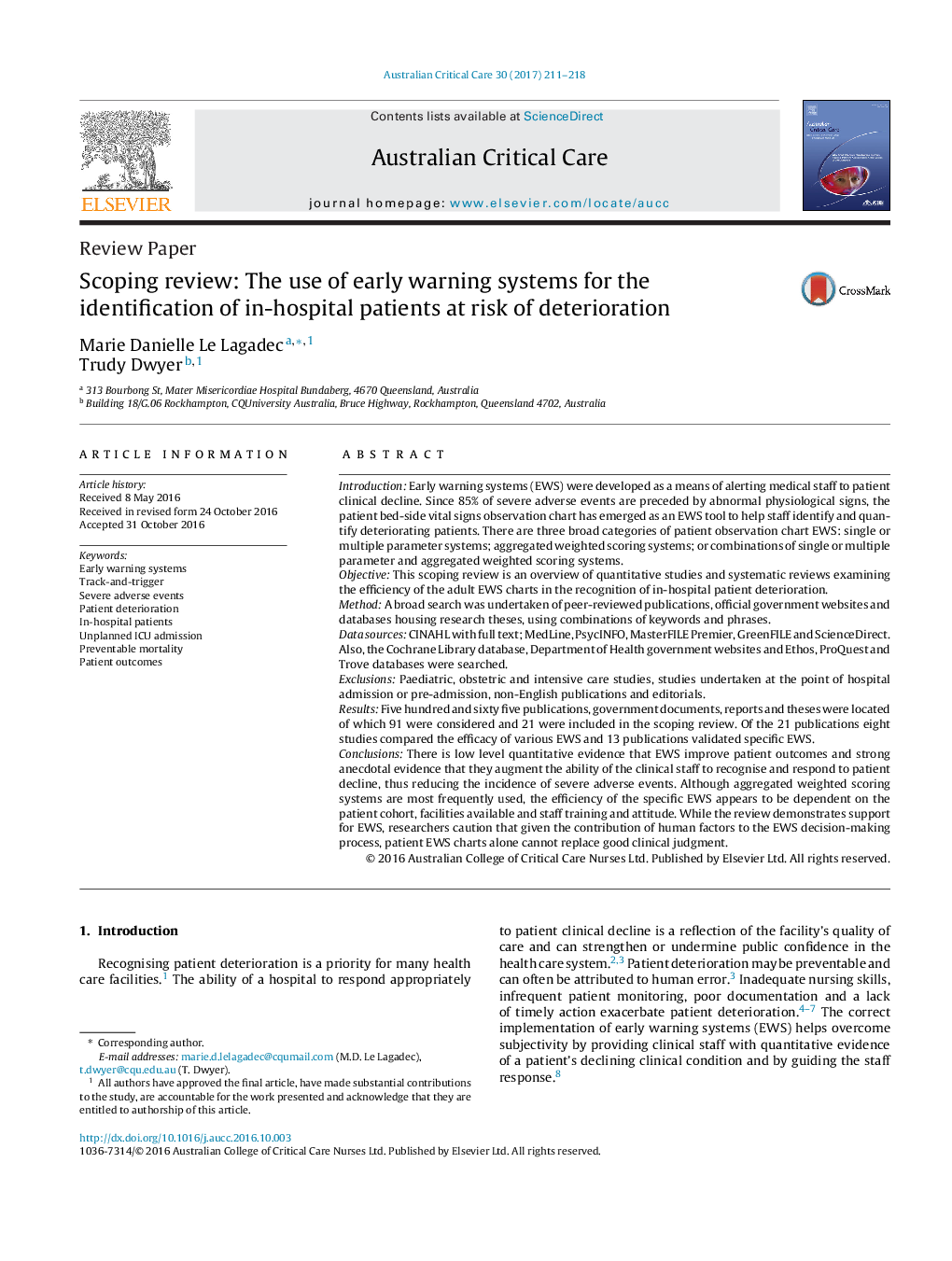| کد مقاله | کد نشریه | سال انتشار | مقاله انگلیسی | نسخه تمام متن |
|---|---|---|---|---|
| 5563010 | 1403447 | 2017 | 8 صفحه PDF | دانلود رایگان |
IntroductionEarly warning systems (EWS) were developed as a means of alerting medical staff to patient clinical decline. Since 85% of severe adverse events are preceded by abnormal physiological signs, the patient bed-side vital signs observation chart has emerged as an EWS tool to help staff identify and quantify deteriorating patients. There are three broad categories of patient observation chart EWS: single or multiple parameter systems; aggregated weighted scoring systems; or combinations of single or multiple parameter and aggregated weighted scoring systems.ObjectiveThis scoping review is an overview of quantitative studies and systematic reviews examining the efficiency of the adult EWS charts in the recognition of in-hospital patient deterioration.MethodA broad search was undertaken of peer-reviewed publications, official government websites and databases housing research theses, using combinations of keywords and phrases.Data sourcesCINAHL with full text; MedLine, PsycINFO, MasterFILE Premier, GreenFILE and ScienceDirect. Also, the Cochrane Library database, Department of Health government websites and Ethos, ProQuest and Trove databases were searched.ExclusionsPaediatric, obstetric and intensive care studies, studies undertaken at the point of hospital admission or pre-admission, non-English publications and editorials.ResultsFive hundred and sixty five publications, government documents, reports and theses were located of which 91 were considered and 21 were included in the scoping review. Of the 21 publications eight studies compared the efficacy of various EWS and 13 publications validated specific EWS.ConclusionsThere is low level quantitative evidence that EWS improve patient outcomes and strong anecdotal evidence that they augment the ability of the clinical staff to recognise and respond to patient decline, thus reducing the incidence of severe adverse events. Although aggregated weighted scoring systems are most frequently used, the efficiency of the specific EWS appears to be dependent on the patient cohort, facilities available and staff training and attitude. While the review demonstrates support for EWS, researchers caution that given the contribution of human factors to the EWS decision-making process, patient EWS charts alone cannot replace good clinical judgment.
Journal: Australian Critical Care - Volume 30, Issue 4, July 2017, Pages 211-218
